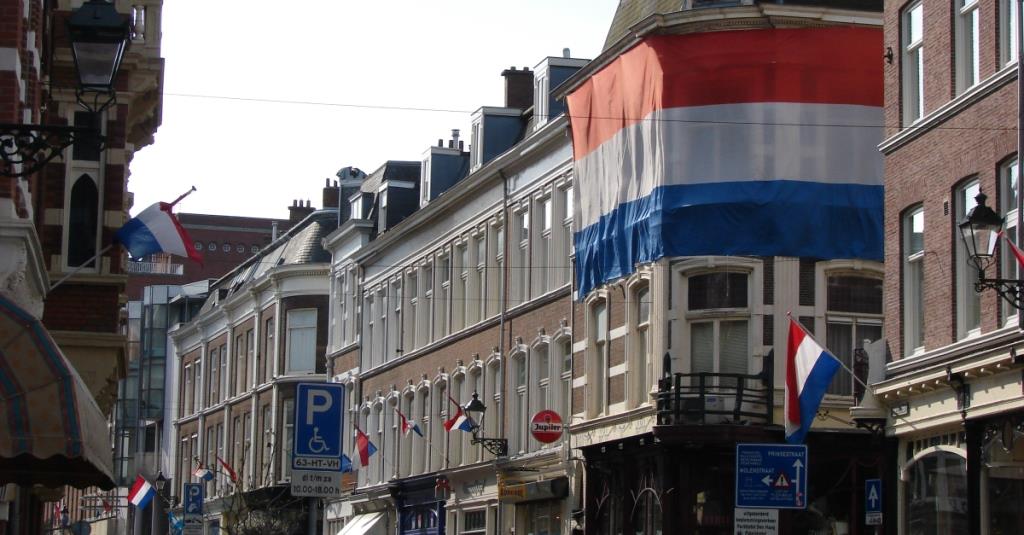On 8 January 1941, Josef Jakobs was sent from Hamburg to The Hague to complete his espionage training. In some of his initial statements to the MI5 officers in April 1941, Josef stated that he had stayed at the Hotel Central while in The Hague. In later statements, he corrected that information and said that while he had gone to the Hotel Central to listen to jazz music, he had stayed at the Hotel Zeben in Molenstraat. While at the Hotel Central, Josef had seen fellow spy, Karel Richter, who had stayed at the Hotel.
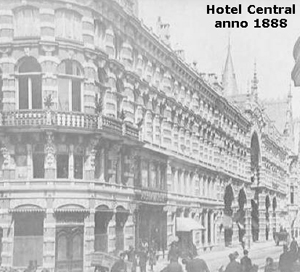
Decades later, the Hotel Central and Hotel Zeben have altered much, and even though one cannot step back in time, one can still get a sense of what Josef and Karel would have experienced.
The Hague – Grand Hotel Central
In 1880, a hotel and the Grand Café du Passage were built in a neo-Renaissance style at Lange Poten 10, in the centre of The Hague. The building would seem to have been rather elaborate (garish perhaps?) based on the photographs.
The cafe had a covered shopping arcade with terraced tables on both sides (See the If Then Is Now site for more photos).
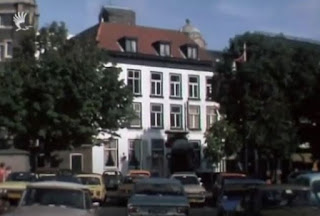
In 1885, the Hague Passage was built and the name of the hotel was changed to Hotel Central, possibly to avoid confusion. The passage was two stories high and covered by a glass roof.
In 1906, the owners of the Hotel Central, the Zuid-Hollandsche Bierbrouwerij (ZHB) [South Holland Beer Brewery)], took over the House of Lords at Hofstraat 4 and started using it as a branch of the hotel. Apparently the ZHB owned a large number of hotels and cafes in The Hague and Amsterdam, a way to ensure a stable income.
The building in which the House of Lords was located existed as early as the 1500s, although the building only acquired the name “House of Lords” during the First World War from interned British officers. The building no longer exists but was located along the northeastern side of what is now the Hofplatz in The Hague (see Google Maps link in Post Script below).
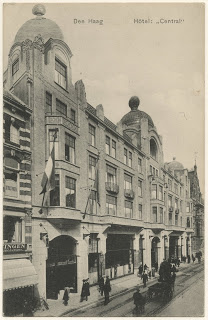
In 1911/1912, the Hotel Central underwent a major renovation and by 1915, looked very different from its earlier “galleried” style – far more concrete, and much less “renaissance”.
The Gustav Mahler website, has some fascinating pictures of the hotel, including interior shots as well as a menu and advertisements from the late 1930s.
The hotel also has a grim side-story. Gustav Mahler’s niece, Alma Marie Rose was an Austrian-Jewish violinist who, after escaping from Berlin to London in 1939, returned to occupied territory to earn money. She played in the Hotel Central’s cafe and restaurant in 1939 but, by 1943, had been deported to Auschwitz. She died in Auschwitz-Birkenau on 4 April 1944.
Today, if one strolls along the shopping promenade, one can still see remnants of the former Hotel Central’s former glory. It is rather eerie to consider that Josef Jakobs and Karel Richter may have sat within the hotel’s opulent surroundings and listened to the music of Alma Marie Rose – all three destined to die before war’s end.
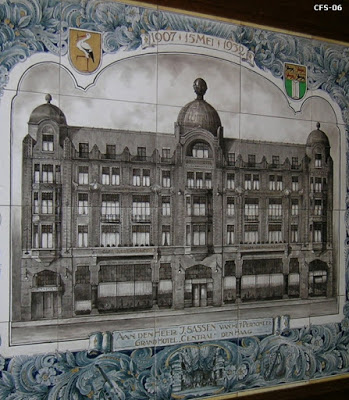
Hotel Zeben – Molenstraat
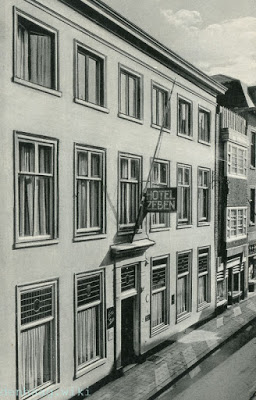
As for the Hotel Zeben, which Josef claimed to have stayed at whilst in The Hague in January 1941, the building still exists at Molenstraat 26, and is still a hotel, albeit with a name change – Hotel Paleis.
The Hotel Paleis has a brief history of the building on their website:
“The monumental building has a rich history dating back to the 17th century, demonstrated by the many closed off secret passage ways that, back in the day, led to the nearby monastery and the old Catholic shelter. Famous Dutch author Louis Couperus frequently stayed here with his older sister and her husband who occupied the building at the end of the 19th century. Their large family and train of servants provided the inspiration for many stories that took place within the walls of the current Paleis Hotel.”

From Josef’s statements to the MI5 officers, we know that, on the days when he had wireless training, he was picked up by an Abwehr car on the street corner outside of the hotel, likely the intersection between Molenstraat and Oude Molenstraat. From there, it would have been a short drive to a flat in the Vondelstraat, where Josef and Karel Richter engaged in wireless training.
Today, Molenstraat is essentially a pedestrian street with the occasional delivery van to dodge. One can stand on the corner of Molenstraat and Ould Molenstraat and almost touch the past… but not quite. Perhaps an archives in The Hague has records from the Hotel Zeben. Rather like a needle in the haystack though! If only buildings could talk…
N.B. I’ve added another post about the Abwehr’s wireless training centre in the Vondelstraat here.
Post Script
I’ve added the locations to My Google Maps – further blog posts on other The Hague locations in the works.

Sources
DenHaag.wiki – piece on Louis Couperus
Haagsefilmbank – has images of House of Lords building from 1977
Gustav Mahler site – piece on Alma Marie Rose
Gustav Mahler site – piece on Hotel Central with great pics
If This Is Now site – pics of Hotel Central
History of The Hague – postcard of Hotel Central
Haags Historische Museum – piece on Hotel Central
eBay.co.uk – postcard of interior of Hotel Zeben
Wikipedia – Hotel Central
